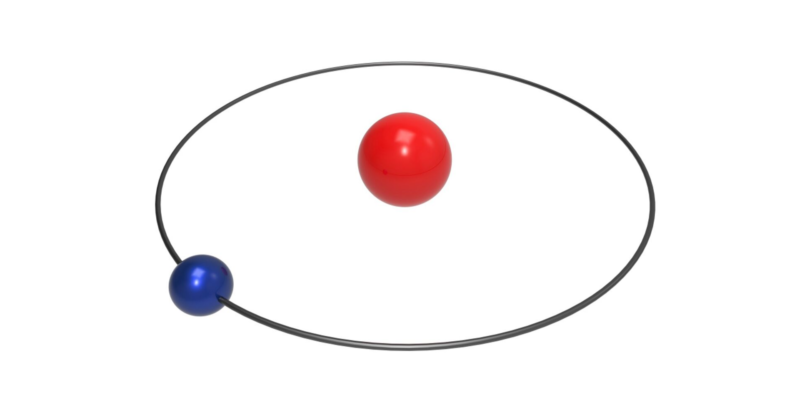We explain what hydrogen is and what its atomic and physical properties are. In addition, its general characteristics, uses and risks.
What is Hydrogen?
Hydrogen is the first element on the periodic table and the most abundant in the known universe : it constitutes more than three-quarters of all observable matter . It is a light element, with the simplest known atomic shape, and usually appears as a colorless, odorless and flammable diatomic gas (H 2 ).Hydrogen was discovered by the British physicist and chemist Henry Cavendish in 1766 and forms most of the mass of stars in their early stages. Our Sun , in fact, is a huge hydrogen fusion bomb in space. According to experts, hydrogen would have been the first element to be constituted of all and is essential for the formation of water (H 2 O).
Today, hydrogen is produced industrially and used in numerous applications , from the refining of fossil fuels to welding and cryogenics.
Characteristics of hydrogen

- Name . The word “hydrogen” comes from the union of the Greek words hydros (water) and genos (birth), so it etymologically means “that gives rise to water”. Obviously this alludes to its participation in the molecule of this vital liquid, together with oxygen .
- Symbol . Hydrogen is the first element in the Periodic Table, always located in the upper left corner, above Lithium. It is represented by the symbol H. It should be noted that hydrogen does not have characteristics that make it easily classifiable into the groups in the Table, which is why it almost always constitutes its own group. However, it is usually included in the IA family (Group 1).
- Atomic properties . The hydrogen atom is the lightest known atom (atomic mass of 1.00794 amu) and has a single electron in its outer shell, so its valence is 1. It is a highly oxidizable non-metallic atom , with a single proton in the nucleus.
- Physical properties . Under ordinary conditions of pressure and temperature (1 atm and 25 ° C), hydrogen behaves as a colorless and odorless gas. However, it is possible to liquefy it (make it a liquid ) at high pressures, as occurs in the heart of stars, or in cooling tanks where liquid hydrogen is used as a refrigerant.
- Flammability . Hydrogen in its gaseous diatomic form (H) is a highly flammable gas, which reacts spontaneously with oxidizing elements such as oxygen, chlorine or fluorine. In addition, it is an essential part of other highly combustible materials, such as hydrocarbons (hydrogen and carbon ), including fossil fuels.
- Solubility . In its pure state, hydrogen is insoluble in water. But, instead, it can be dissolved in various metals , which makes it an indispensable element in metallurgy. It is very soluble in rare earths, in transition metals, and in crystalline and amorphous metals.
Hydrogen abundance
 Hydrogen makes up more than 70% of the visible matter in the universe, making it the most abundant element of all.
Hydrogen makes up more than 70% of the visible matter in the universe, making it the most abundant element of all.It can be found in the heart of young stars , in the atmosphere of large gaseous planets (such as Jupiter and Venus ), as traces on the Earth's surface, and also as part of thousands of organic and inorganic compounds in nature. Many biological processes throw it out as a result.
Hydrogen isotopes
Hydrogen has several isotopes (atoms of the same chemical element, but which have different amounts of neutrons):
- Protium ( 1 H) . Composed of a proton and no neutrons in its nucleus. It is the most common version of hydrogen.
- Deuterium ( 2 H) . Heavier than ordinary hydrogen, its nucleus has a neutron along with the proton in its nucleus.
- Tritium ( 3 H) . It has two neutrons in its nucleus next to the proton, making it even heavier.
Uses and applications of hydrogen
 This chemical element is part of a wide range of industries , both in applied chemistry (hydrocarbons, fertilizers, space fuels), physics (controlled fusion of hydrogen to generate electricity ), and in other areas such as pharmacology, transportation (balloons aerostats and zeppelins), and semiconductors.
This chemical element is part of a wide range of industries , both in applied chemistry (hydrocarbons, fertilizers, space fuels), physics (controlled fusion of hydrogen to generate electricity ), and in other areas such as pharmacology, transportation (balloons aerostats and zeppelins), and semiconductors.
Hydrogen hazards
Handling hydrogen in its pure state is extremely delicate , since its flammability represents a significant industrial risk, as well as its ability to mechanically asphyxiate by displacing oxygen from the air . Liquid hydrogen, a powerful cooler, can also destroy organic tissues.The above content published at Collaborative Research Group is for informational and educational purposes only and has been developed by referring reliable sources and recommendations from technology experts. We do not have any contact with official entities nor do we intend to replace the information that they emit.
Luke is passionate about fostering student involvement and connection. He studied psychology for his major and likes learning about the past. Luke aims to specialize in artificial intelligence and cybersecurity. .
Leave a reply
Your email address will not be published. Required fields are marked *Recent post

Sport: What Is It, Types, Risks, Features, Characteristics and Examples
September 23, 2021

Dogs: Emergence, Features, Characteristics, Feeding and Breeds
September 24, 2021

Story: Definition, Elements, Structure, Features and Characteristics
September 24, 2021

Essay: Definition, Structure, Features, Characteristics, How to Do It
September 24, 2021
